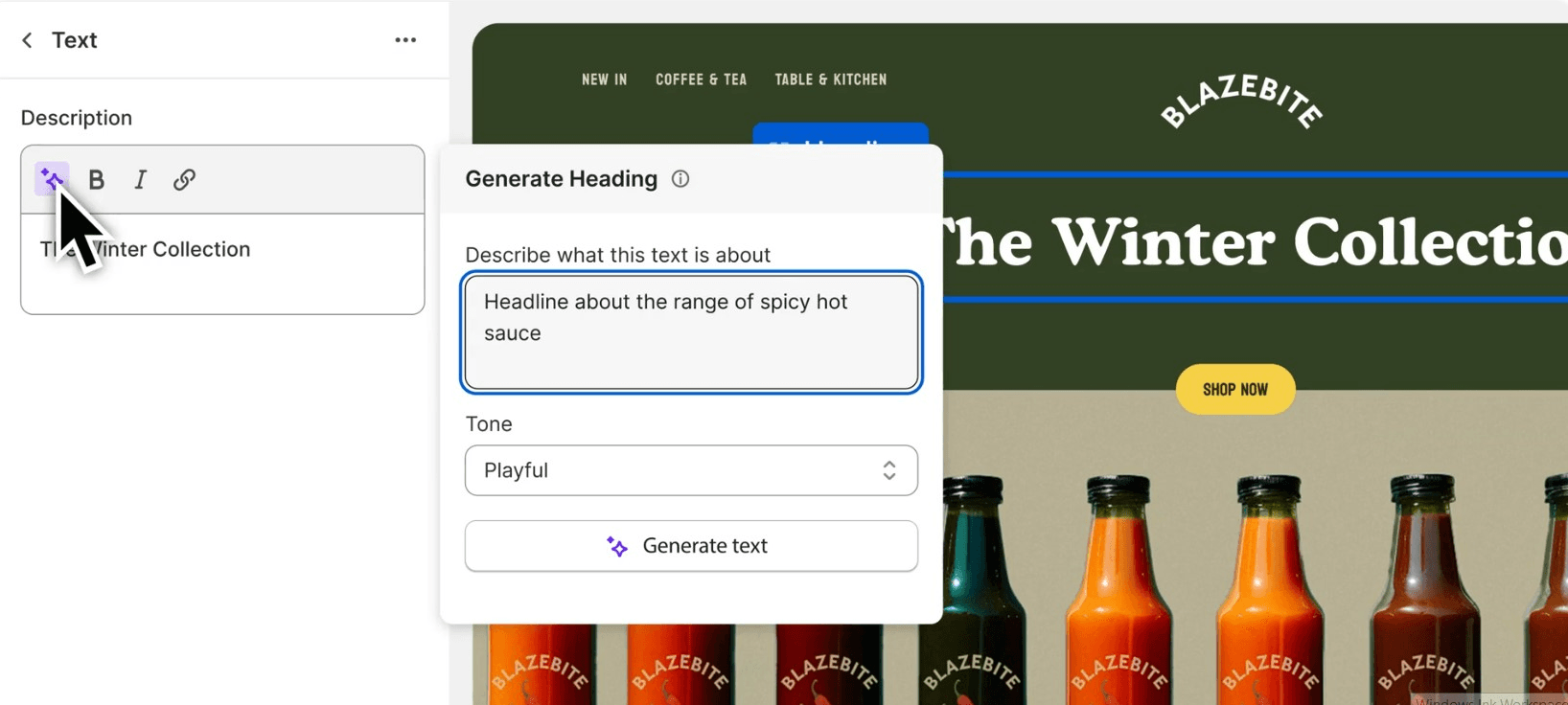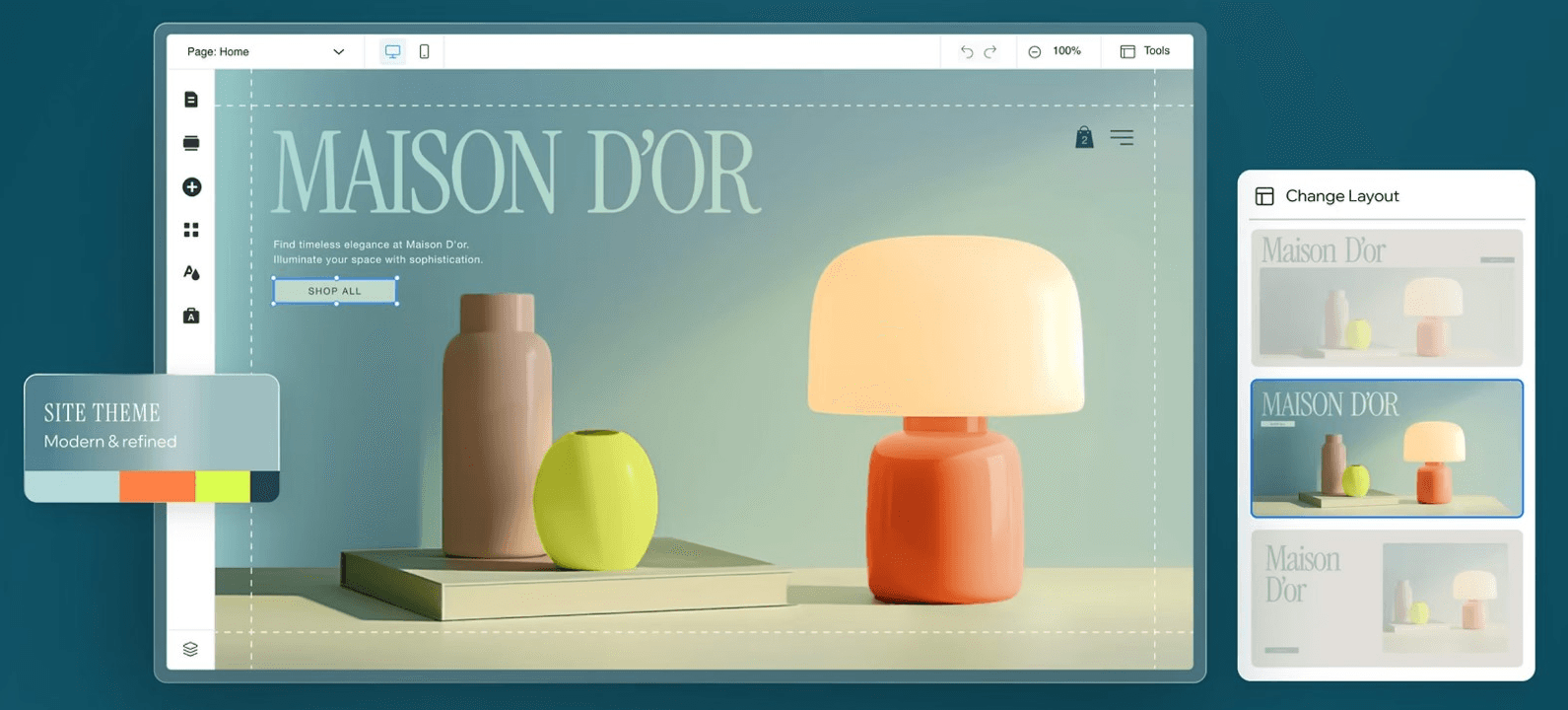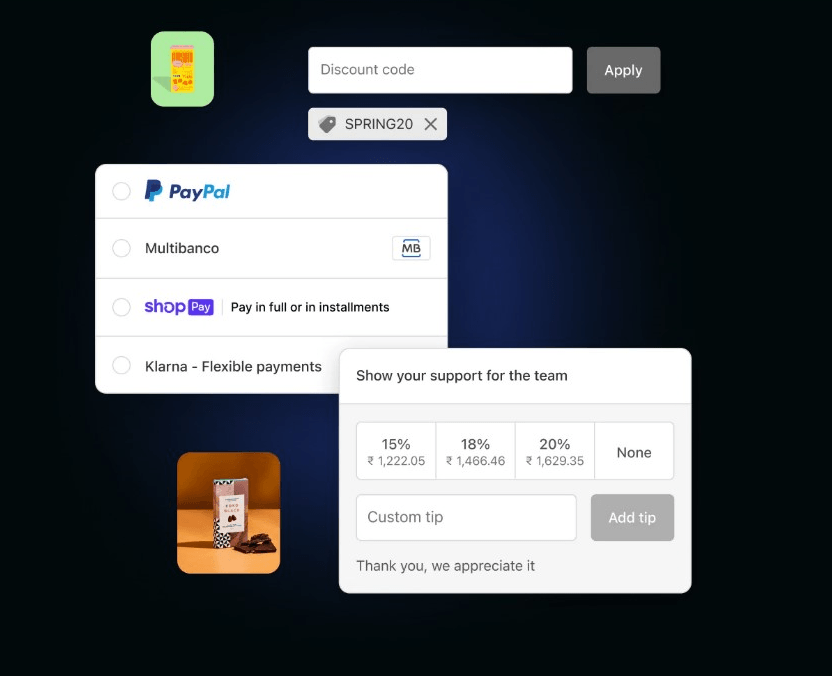Shopify vs. Wix: Which Website Builder is Best For E-Commerce?

With website builders like Shopify and Wix, creating your own e-commerce store has never been easier. The problem, then, comes with choosing which web builder to choose for your online store needs.
While Shopify is often the go-to for e-commerce sellers, Wix also has some serious capabilities that give Shopify a run for their money. Here’s a side-by-side comparison of the two to help you pick the right one for your business!
Overview of key features
| Features | Shopify | Wix |
| Templates | 800+ | 2000+ |
| Drag-and-drop + AI website builder | Yes | Yes |
| App store | 8,000+ | 800+ |
| E-commerce functionalities | Robust | Moderate |
| Pricing | Ranges from $5 to $399/ month with more advanced plans costing $2,500/ month | Ranges from free to $159/ month |
| Best for | Sellers who want to focus on e-commerce alone | Small businesses who want a good online store with additional functionalities, such as blogging |
Now for the nitty-gritty.
Pricing plans
| Shopify | Wix |
| -Starter: $5/ month -Basic: $39/ month -Retail: $89/ month -Grow: $105/ month -Advanced: $399/ month -Shopify Plus: $2,500/ month -Enterprise: Custom pricing | -Free: $0 -Light: $17/ month -Core: $29/ month -Business: $36/ month -Business Elite: $159/ month -Enterprise: Custom pricing |
Wix’s pricing plans are clearly much cheaper than Shopify’s. But you’ll pay for this difference with functionality and features. While Shopify allows you to build an e-commerce store on any of its plans, with Wix, you can only do so if you have the Core plan or beyond.
With that being said, even if you opt for the Wix Business Elite plan (which comes with advanced e-commerce features), you’ll be paying less than half of what you’ll have to pay with Shopify.
🏅 Winner: Wix is more cost-effective than Shopify.
Ease of use
Both Shopify and Wix are pretty easy to use — even for beginners — and don’t need any coding.
Shopify lets you customize each section from pre-made templates, which means your first store can be up and running in just a few minutes. It also has an AI builder that creates personalized blocks/ sections for you. Just describe what you want and it’ll write up the code for you in seconds.

In addition to the section editor, Shopify has also recently added drag-and-drop functionality, making it super easy for you to switch up the layouts from the templates and style it according to your preferences.
Wix has always been known for its ease of use with its drag-and-drop editor. Each section is customizable — down to the colors and fonts.

If you need a more tailored approach, Wix also has an AI editor that will build your website for you! This web builder also lets you include advanced design features — such as animations and scroll effects — all without any coding knowledge required.
Both website builders let you add product videos. Shopify’s store has some cool apps that can enhance your customer’s experience even more, though — such as the Augmented Reality feature that lets buyers visualize the product in their own space. This feature is missing in Wix.
🏅 Winner: It’s a tie! Both Shopify and Wix are very beginner-friendly with easily editable templates, clearly written tutorials, and AI website builders to help users who have no technical knowledge.
E-Commerce functions
| Shopify | Wix |
| -Robust multichannel integrations -Sell unlimited products on all plans -Integration with 100+ payment processors + Shopify payments -POS support for any country -Support for dropshipping and print-on-demand -Shareable payment links -Advanced functionalities are more reliant on apps | -Moderate multichannel integrations -Limited inventory space -Integration with 100+ payment processors + Wix payments -POS support only for US and Canada -Support for dropshipping and print-on-demand -Shareable payment links -Has more in-built features |
Multichannel integrations
Since Shopify was built specifically for e-commerce, this is where it really shines. It offers multichannel integration with online marketplaces (such as Amazon, eBay, and Walmart), social media platforms (like Instagram and TikTok), and even Google Shopping.
While Wix also supports multichannel integrations, it isn’t as robust as Shopify. It doesn’t offer support for Pinterest, Walmart, and Target Plus. Moreover, Shopify lets you connect WhatsApp and SMS, too, while Wix doesn’t. Unlike Shopify, Wix also doesn’t let you embed the “buy” button on any website.
POS operations
Shopify also supports point-of-sale (POS) operations for selling in-store no matter where you are in the world through its POS app. You can use your own hardware or get them from Shopify.
You have features such as customizing the checkout screen, setting up customer profiles, and more. Don’t use Shopify POS but still want to collect user data? Use Shopify server-side tracking.
Wix also has POS support, but only for US and Canada, which is very limiting. You also have to buy Wix’s POS hardware, which can cost you upwards of $1,000, making this an expensive choice, too.
Check-out experience
Both Wix and Shopify allow for fast, seamless, and personalized checkout experiences. Both offer visual customizations, in-store or curbside pick-up, advanced security, flexible shipping options (i.e. adding rules for free shipping above a certain price point), and address autocomplete.

If you want to customize the checkout experience even more with loyalty programs, discount coupons, upsells, free samples, and any custom fields, you need additional Shopify apps that can only be accessed if you have the most expensive Shopify Plus plan (at $2,300/ month).
Wix, though, lets you make more customizations with its in-built editor. You can add disclaimers, include a section to redeem a gift code, add a rule to automatically generate and send an invoice to the customers, and so on. What we really like about Wix is that it allows customers to bundle and checkout different types of products and services from the same cart!
International e-commerce and shipping
Once again, both apps have all the basics covered when it comes to selling worldwide. You can automatically translate your store to multiple languages, have your customers view your products (and make purchases) in their local currencies, collect any taxes automatically, and offer support for local shipping methods.
Shopify, however, does offer a bit more features that tip the scales in its favor. For instance, it lets you choose a custom theme for each regional market. You can also personalize your storefront and pick and choose the products you want to sell for each region.
When it comes to shipping, Shopify wins hands down because it has its own Shopify Shipping Service that lets you buy discounted shipping labels and offer accurate shipping costs to your customers upfront. The platform also has partnerships with various fulfillment networks that make delivery even easier for you. You also get huge discounts, so you’ll save lots of money in the long run.
On Wix, however, you need to connect to third-party shipping apps, which can make things a little bit difficult for sellers for you.
🏅 Winner: Shopify takes the lead when the question of e-commerce functions comes into play. It has better features, is more convenient, and offers larger options for scaling your online store.
Marketing and analytics tools
On the marketing front, both Shopify and Wix perform quite well. Both have great email marketing integrations that help you segment your customers and reach them right in their inboxes. You can capture leads through forms and retarget customers through upsells and abandoned cart emails.
Both Shopify and Wix have great in-built SEO tools. But, Wix offers a more robust blogging platform, while Shopify’s is quite basic. On the other hand, when it comes to international SEO. For regional markets, Shopify translates the URLs as well, while Wix does not.
More marketing features (such as upsells, loyalty programs, etc.) are available to you through the extensive library of apps that both website builders offer. Both platforms also have basic analytics functions that give you reports on your store’s performance.
🏅 Winner: It’s a tie!
Verdict: Which is better, Shopify or Wix?
Both website builders are great as they have their own strengths and weaknesses. That being said, we do think it depends on your business needs.
Shopify is best for you if: You want a full-fledged e-commerce store with online selling as the focus that can scale as you grow.
Wix is best for you if: You are a small business looking to promote your online presence as a whole (with blogs and whatnot) with your store being only one component of it.
Questions or just say hello!
Well, congratulations to you for making it this far! Here’s a reward in the form of a 10% discount code on your first month of Crosslist (add during check-out). Sign up now with a 3-day money-back guarantee!
10% off
BLOG10
You can learn more about how Crosslist works here.
If you have further questions, feedback, bug reports, or want to know a bit more about us, why not swing by for a chat and say G’day! You can have a chat with us through Messenger.
